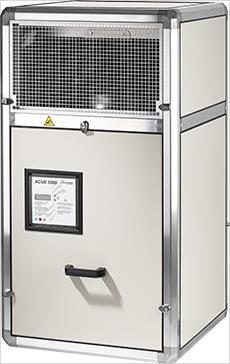Most network operators will agree that highly efficient networks meet strict requirements of coverage, durability and dependability. The added challenge, not to mention, is the need to meet these requirements within an assigned budget. Based on a case concerning the roll-out of a new TETRA network in Scandinavia, this article covers an innovative approach to new and existing network infrastructure with a view to ensuring financial sustainability, high coverage, durability and dependability.
Regardless of the actual nature or application, global networks share requirements such as wide coverage, operational security and cost-effective operation. After all, the robust and resilient nature of global network infrastructures is their primary attribute. But how is this done without creating a setup out of realistic financial reach?

1: Share and share alike — strategic co-location
When establishing a new TETRA network in Scandinavia, the organisation behind the project took an innovative approach to the roll-out. They joined forces with two of the largest mobile operators of region and installed the emergency transmission equipment at their existing Telecom sites. This enabled country- wide coverage without severe budget posts such as site rental and enclosure construction. On top of this, the new TETRA network would be part of an existing network infrastructure known for its extremely energy-efficient operation.
Whether you are establishing new networks or managing existing setups, co-location as seen in this case represents a highly sustainable solution to reducing your overall network costs. For new networks, this strategy provides instant coverage and reduces implementation, operational and maintenance costs. For existing networks, letting out a small space at existing Telecom locations provides considerable, continuous contributions to the overall site operating costs.
2: Remember the backbone of dependable operation (P.S. it’s not redundancy…)
The total availability of any communications network is mostly viewed as a matter of robustness of the advanced electronic equipment behind the network — and, of course, the buzzword of the business: redundancy. Now, the duplication of critical components or functions of a system is without a doubt a very important element in securing the dependability of communications networks. However, when discussing equipment durability and fail-safe communications, it is essential to ensure the overall site performance by means of reliable, energy-efficient heat removal. As underestimated as this aspect may sometimes be, it is a deal-breaker, when it comes to creating dependable, financially sustainable networks.
 Electronics cooling as a means of ensuring dependability
Electronics cooling as a means of ensuring dependability
In this case, the two operators hosting the new TETRA equipment were both using High-Capacity Free Cooling by Dantherm for all of their sites. Being DC-powered, this solution generates cooling in a less complex system than that of traditional
air conditioners. Consequently, performance-critical determinants such as configuration, troubleshooting and general maintenance can be kept equally manageable in terms of complexity and costs. By utilising ambient air ventilation, the Dantherm solution protects the advanced electronic equipment from break- downs at extremely low costs compared to traditional air conditioners (more about this in the next section). Finally, the DC-powered solution can run on emergency backup battery power – crucial to the site uptime in the event of
power outage or network overload.
3: Control automation — define your strategy and stay in control
Financial sustainability is more than focusing on dependability to ensure a stable income stream. In this case, the two operators had made themselves known for establishing extremely energy-efficient (and thus highly cost-saving) networks. Part of this achievement was rendered possible by their strategy of using Free Cooling for all of their sites country-wide. Why? Because Free Cooling is the most energy-efficient cooling method and highest savings generator within electronics cooling.
But Free Cooling as the highest savings generator cannot be categorised as such without an intelligent control strategy. The software behind the built-in Dantherm controller of this cooling solution enables site-specific, capacity-controlled cooling. This means that the solution only provides the exact amount of cooling necessary to maintain the desired temperature set point inside the enclosure. Additionally, the unit uses the lowest possible amount of energy to provide the needed cooling amount at all times.
Conclusion
When establishing a new TETRA network in Scandinavia, the responsible organisation took an innovative approach to ensuring financial sustainability, high coverage, durability and dependability. First of all, they chose a strategy of co-location. This enabled wide coverage and low implementation costs. In turn this contributed to reducing the existing site operating costs. The overall site performance was ensured by means of reliable, energy-efficient heat removal: the deal-breaker, when it comes to creating dependable, financially sustainable networks. The two operators hosting the new TETRA equipment were both using High-Capacity Free Cooling by Dantherm for all of their sites. This solution protects the advanced electronic equipment from break-downs at extremely low costs compared to traditional air conditioners and runs on emergency backup battery power. Finally, the built-in controller ensures site-specific cooling and strict control of the cooling OPEX at each site. In conclusion, ensuring financial sustainability in network infrastructure is not so much a matter of re- inventing the wheel. It’s a matter of re-thinking the use of it.

